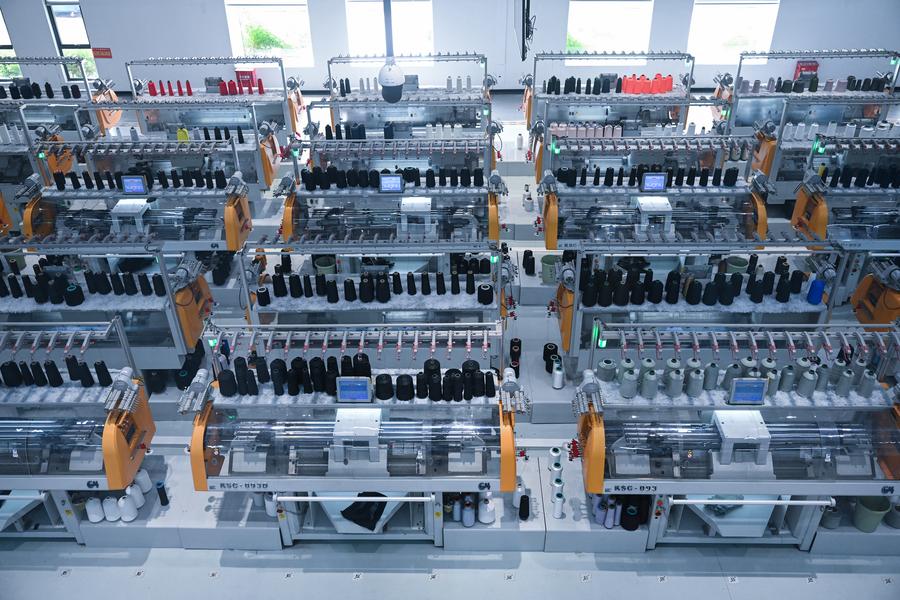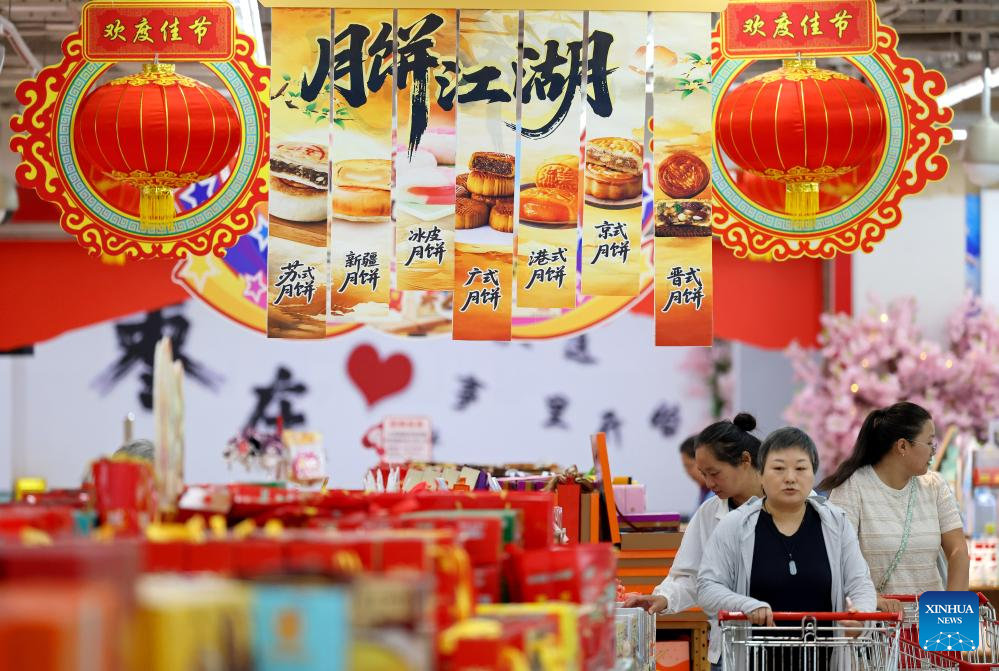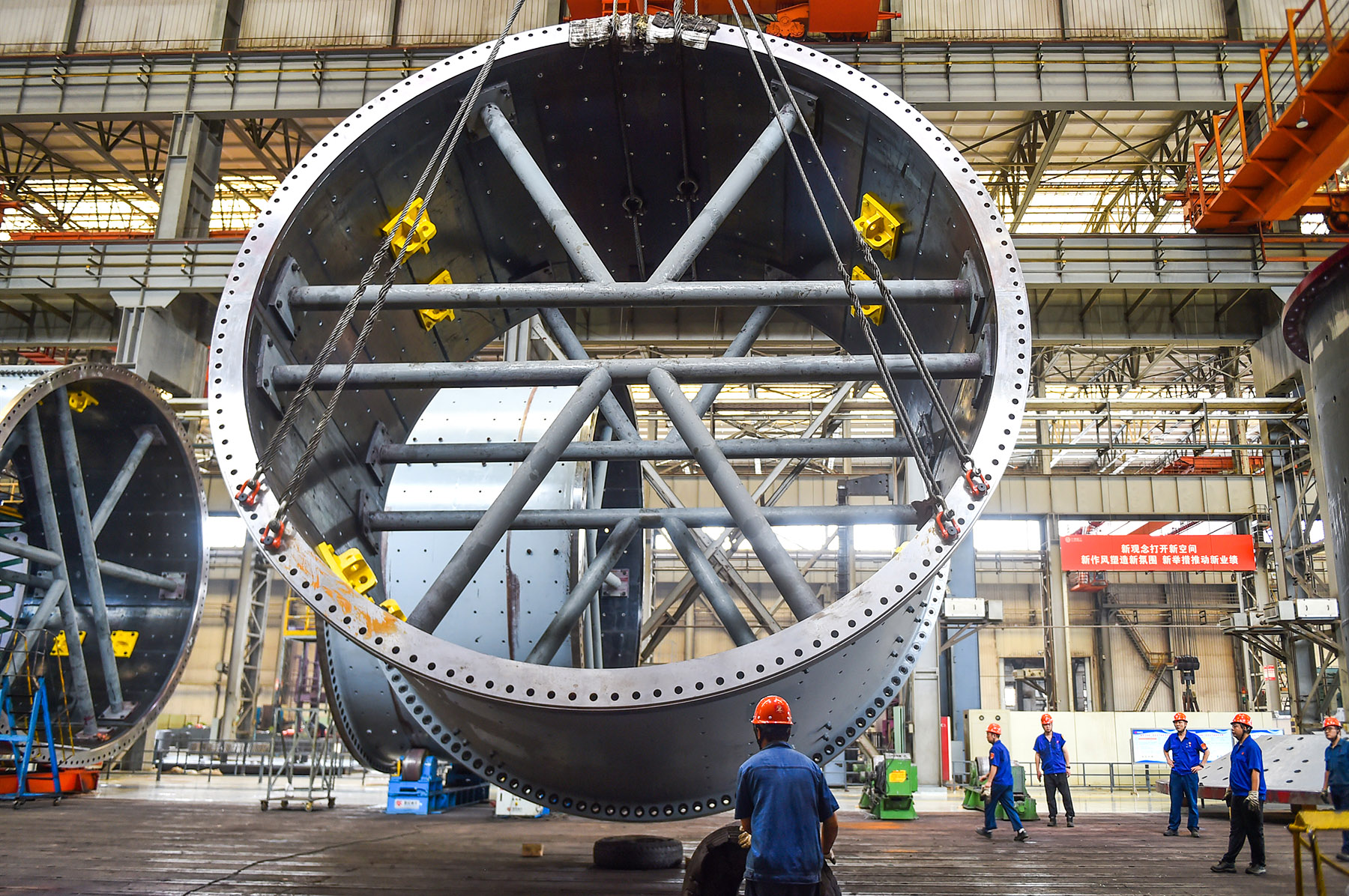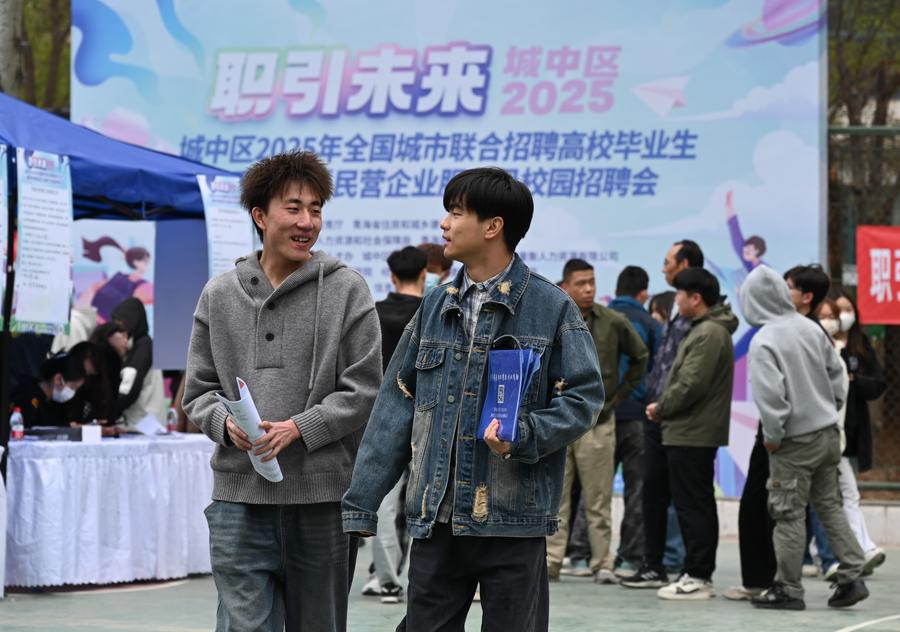
BEIJING - China's industrial production continued to demonstrate structural improvement in August, with innovation-driven development gaining momentum while integration between technological advancement and industrial upgrading accelerating.
The country's value-added industrial output expanded 5.2 percent year-on-year in August, down from a 5.7-percent rise in July, according to data released by the National Bureau of Statistics on Monday.
In the first eight months of this year, the industrial output increased 6.2 percent compared to the same period last year.
The industrial output is used to measure the activity of large enterprises, each with an annual main business turnover of at least 20 million yuan ($2.8 million).
A breakdown of the data showed that the manufacturing sector's value-added output increased 5.7 percent year-on-year last month, while that of mining grew 5.1 percent. The value-added output of the electricity, heat, gas, water production and supply sector rose 2.4 percent.
Commenting on the August data, the bureau's spokesperson Fu Linghui told a press conference that the cultivation of new quality productive forces has strengthened, and new economic growth drivers continued to emerge.
The high-tech manufacturing sector continued to outperform, supporting the trend of industrial transformation. In the first eight months, value-added output in high-tech manufacturing climbed 9.5 percent from one year earlier, according to the data.
Fu noted that the country's shift toward intelligent and green production also advanced steadily.
In the first eight months, the output of industrial robots and civilian drones increased 29.9 percent and 53.7 percent year-on-year, respectively, reflecting accelerated adoption of automation and smart technologies. Meanwhile, new energy vehicle production surged 31.4 percent during the same period.
According to Fu, China's policies to boost domestic demand are also increasingly feeding through to the production side, driving rapid production growth in related sectors.

Retail sales
The bureau's data also indicated China's consumer spending in the first eight months of this year expanded at a solid pace, with retail sales of consumer goods growing 4.6 percent year-on-year to 32.39 trillion yuan.
In August alone, retail sales of consumer goods rose 3.4 percent from a year earlier to nearly 3.97 trillion yuan, according to the bureau.
Online retail sales remained a bright spot, climbing 9.6 percent year-on-year to 9.98 trillion yuan in the first eight months, the bureau's data showed.
From January to August, retail sales of consumer goods in urban areas reached 28.11 trillion yuan, up 4.6 percent year-on-year, while retail sales in rural areas amounted to nearly 4.29 trillion yuan, an increase of 4.7 percent year-on-year.
Sales of physical goods online increased by 6.4 percent to nearly 8.1 trillion yuan, accounting for a quarter of total retail sales.
ALSO READ: Subsidized loans eye stimulating consumption
Among them, sales of food, clothing and daily necessities increased by 15 percent, 2.4 percent and 5.7 percent, respectively, according to the data.
The bureau's spokesperson Fu said the implementation of special actions to boost consumption, the optimization of trade-in programs for consumer goods, and the rollout of childcare subsidies and free preschool education will strengthen individuals' consumption capacity and willingness.
The upcoming Mid-Autumn Festival and National Day holidays are also expected to further stimulate consumption, Fu added.
The consumer price index (CPI), a main gauge of inflation, was down 0.4 percent year-on-year in August, while the core CPI, which excludes food and energy prices, rose 0.9 percent, quickening from July's 0.8-percent increase. August marked the fourth consecutive month of broadened gains in the core CPI.

Fixed-asset investment
Meanwhile, the country's fixed-asset investment rose in the first eight months of 2025, with manufacturing investment growing at a fast pace, the official data showed.
Total investment increased 0.5 percent year-on-year to over 32.61 trillion yuan, the bureau said.
Specifically, investment in the manufacturing sector increased 5.1 percent year-on-year, while investment in infrastructure construction grew by 2 percent, according to the data.
High-tech industries saw robust growth. Investment in information services surged 34.1 percent year-on-year, while that in aerospace vehicle and equipment manufacturing jumped 28 percent. Investment in computer and office device manufacturing increased 12.6 percent.
Excluding real estate, fixed-asset investment increased 4.2 percent year-on-year during this period.

Job market
China's job market remained generally stable in August, with the surveyed urban unemployment rate standing at 5.3 percent in August, up 0.1 percentage point from July, the bureau said.
In the first eight months of this year, the surveyed urban unemployment rate was 5.2 percent on average, according to the National Bureau of Statistics.
The bureau said the rise in the August unemployment rate was a seasonal one, and the August figure remained consistent with the level observed during the same period last year.
READ MORE: China adds 6.95m new urban jobs in H1, achieving 58% of annual target
Employment among key groups remained generally stable. In August, the unemployment rate for rural migrant workers stood at 4.7 percent, below the national average.
China has set a target for a surveyed urban unemployment rate of around 5.5 percent in 2025 and aims to create over 12 million new urban jobs within the year.

Home price
On the property market, residential housing prices in China's 70 large and medium-sized cities continued to see narrowed year-on-year declines in August, while the prices also dropped monthly, the bureau's data showed.
The bureau stated in a press release that the prices of new homes in the country's four top-tier cities - Beijing, Shanghai, Guangzhou and Shenzhen - decreased by 0.9 percent from a year ago, a smaller decline than the 1.1 percent drop recorded in July. Notably, bucking the overall trend, Shanghai, the country's economic hub, recorded a 5.9 percent rise.
Other major cities also reported slower declines, with new-home prices in second-tier cities down 2.4 percent, easing from a 2.8 percent fall in July, and third-tier cities saw a 3.7 percent decrease, compared with a 4.2 percent slide the previous month.
On a month-to-month basis, the downward momentum in new home prices also eased in first- and second-tier cities, although third-tier markets experienced a slightly wider decline.
READ MORE: Policy measures for realty taking effect
The data also showed that prices for existing homes in major cities continued to edge lower last month.
China has continued its efforts to stabilize the property sector this year, with a range of measures aimed at ending the market downturn while stimulating housing demand. In particular, the top-tier cities of Beijing, Shanghai and Shenzhen have further refined their housing measures since August.
Spokesperson for the bureau Fu said these measures have yielded results.
Fu noted that sales volumes and revenues of new homes in some first- and second-tier cities have continued to grow, while the total area of unsold housing has declined for six consecutive months.
Despite these encouraging signs, Fu cautioned that the property sector's overall sales remain on a downward trend. "The recovery of the real estate market will take time," he emphasized.
Looking ahead, Fu said that more efforts will be made to advance urban renewal projects, foster a new model for real estate development, and expand the supply of high-standard housing, ensuring the stable and healthy development of the property sector.


